Only a few kilometers south of pretty Padua, the Euganean Hills unexpectedly rise out of the flat plain of the Southern Veneto Region. Formed by volcanic activity about 30 million years ago, the small hilltops have been a favourite holiday destination for hundreds of years.
Visitors have long appreciated both the curative properties of the area’s hot springs and the possibility to quickly escape the din of the bigger surrounding towns and to retreat to a semblance of a simpler life. The most famous person to fall in love with the Euganean Hills was the medieval poet Petrarch, who spent his last years here and is buried in the village of Arqua Petrarca.
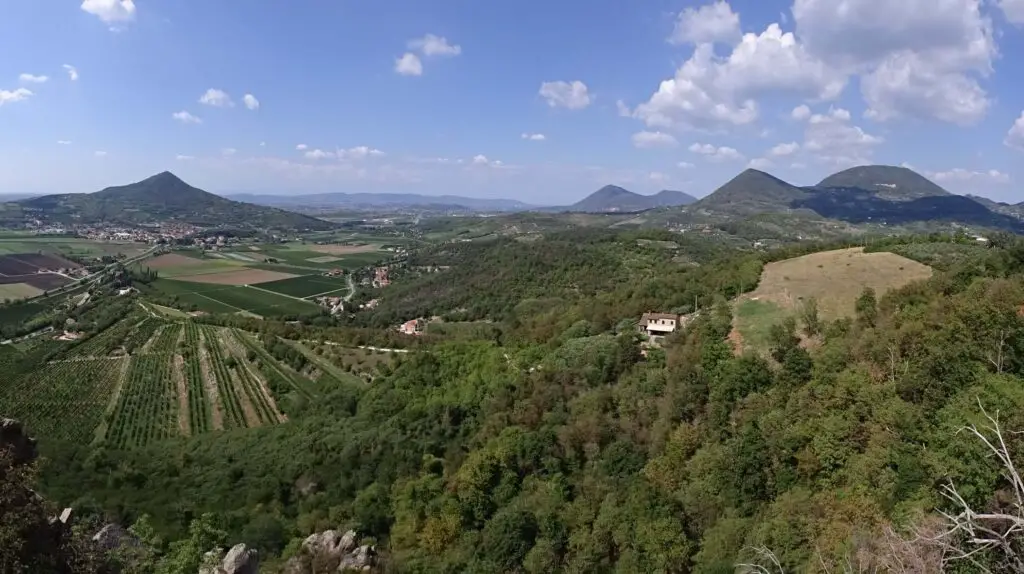
Considering their proximity to Padua, the hills are a perfect destination for a day trip from the city to explore peaceful villages, take some shorter hikes and stroll around the amazing Villa Barbarigo Garden, voted Italy’s most beautiful garden. Read on for my one-day itinerary of the Euganean Hills.
This post may contain affiliate links and I might earn a small commission at no additional cost to you. For more info click here.
How to get to the Euganean Hills
Public transport in the Euganean Hills is a little complicated. Buses to most villages exist, but unfortunately they are far and few between. If you start from Padua, you can likely only make one of the stops mentioned in this itinerary. You can check the network and current timetables of Padua’s suburban buses on this site.
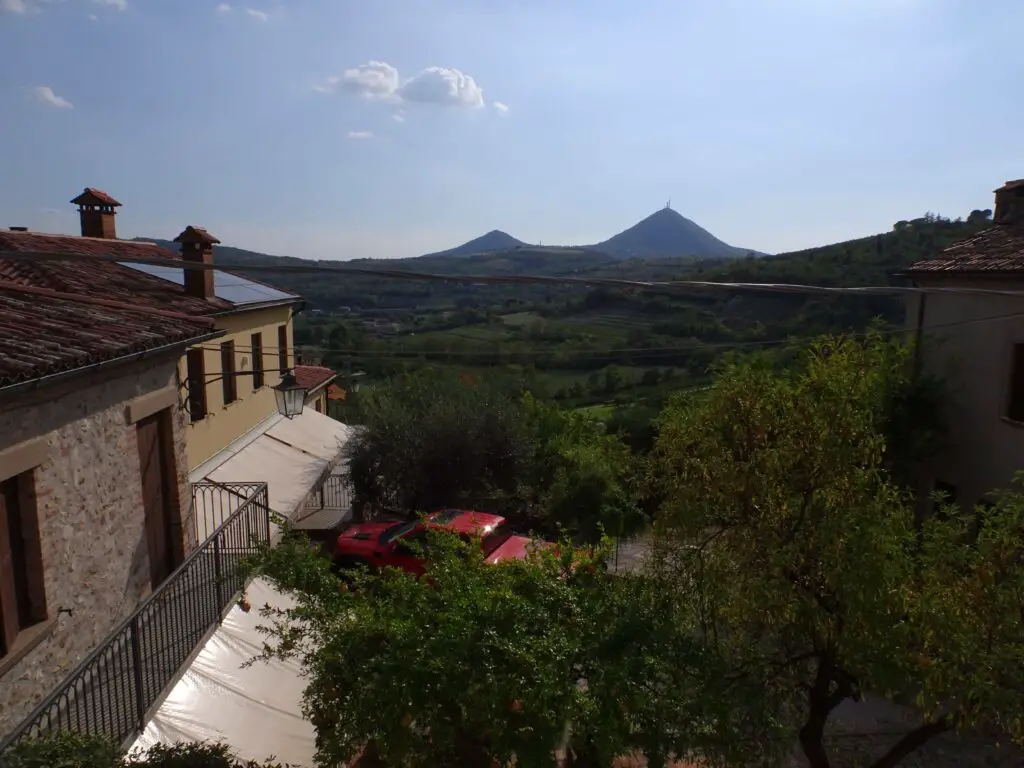
The only real flexibility in this area comes with a car of your own. If you decide to rent one, have a look at below to find the best deals:
Guided trips to the Euganean Hills from Padua
Without your own set of wheels, a guided tour of the area would be the easiest way to get acquainted with the Euganean Hills.
This tour includes both entrance to the beautiful Villa Barbarigo Garden and the famous Villa Vescovi in nearby Luvigliano, transport and a local guide, while this hiking tour in the Monte Venda region includes transport from Padua and an experienced guide. Along the way, you’ll have a chance to explore the Monastero degli Olivetani, the picturesque ruins of a medieval monastery.
Have a look at these other options:
The perfect one-day itinerary of the Euganean Hills
Villa Barbarigo Garden
Start your exploration of the area at this magnificent baroque garden from the 17th century near the village of Valsanzibio. Voted Italy’s most beautiful garden in 2003, the complex is full of weathered statues, small fountains, artificial grottos and all kinds of unusual sights. There is even a rabbit island and a big boxwood labyrinth, in case you ever wanted to feel like Jack or Danny Torrance in The Shining.
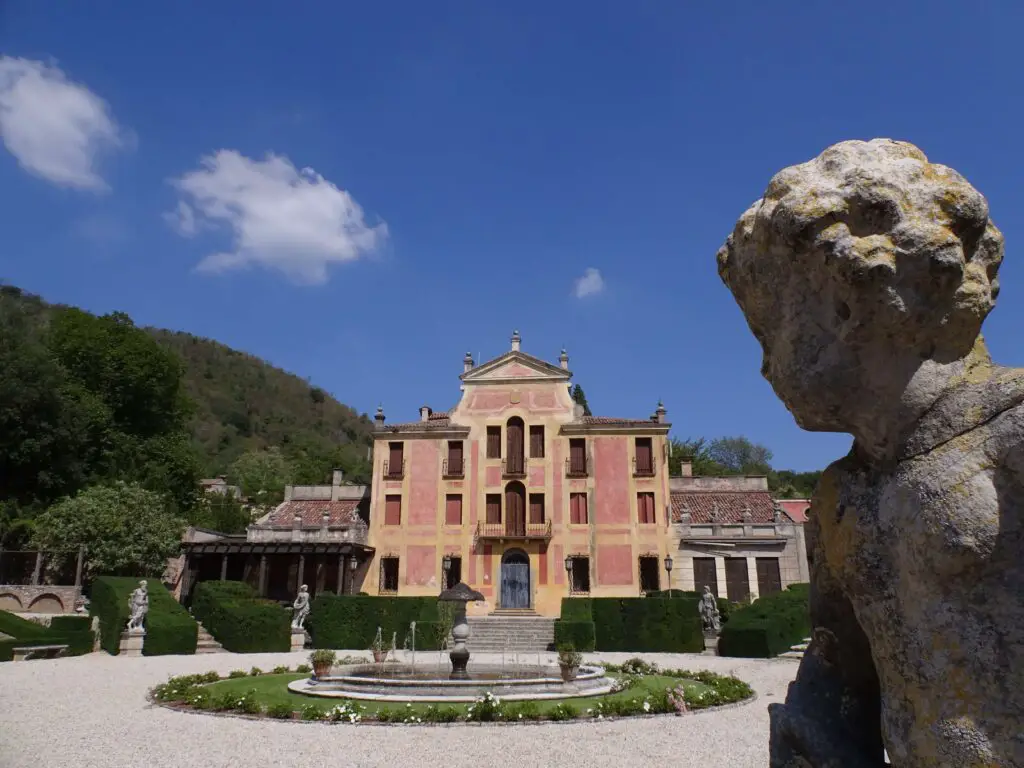
The garden is open from the last weekend of February to the second weekend of December, from 10AM to 1PM and from 2PM to sunset during weekdays and from 10AM to Sunset non-stop on Saturdays and Sundays. You can double-check the times here. The entrance fee is 12€ for adults and 6,50€ for children
Have a look at my dedicated guide to this unique garden here.
Arqua Petrarca
The nearby village of Arqua Petrarca should be the next stop on your itinerary. Not only does it sport a pretty and well-preserved medieval core full of small houses and charming churches, but it used to be home to one of Italy’s most famous poets.
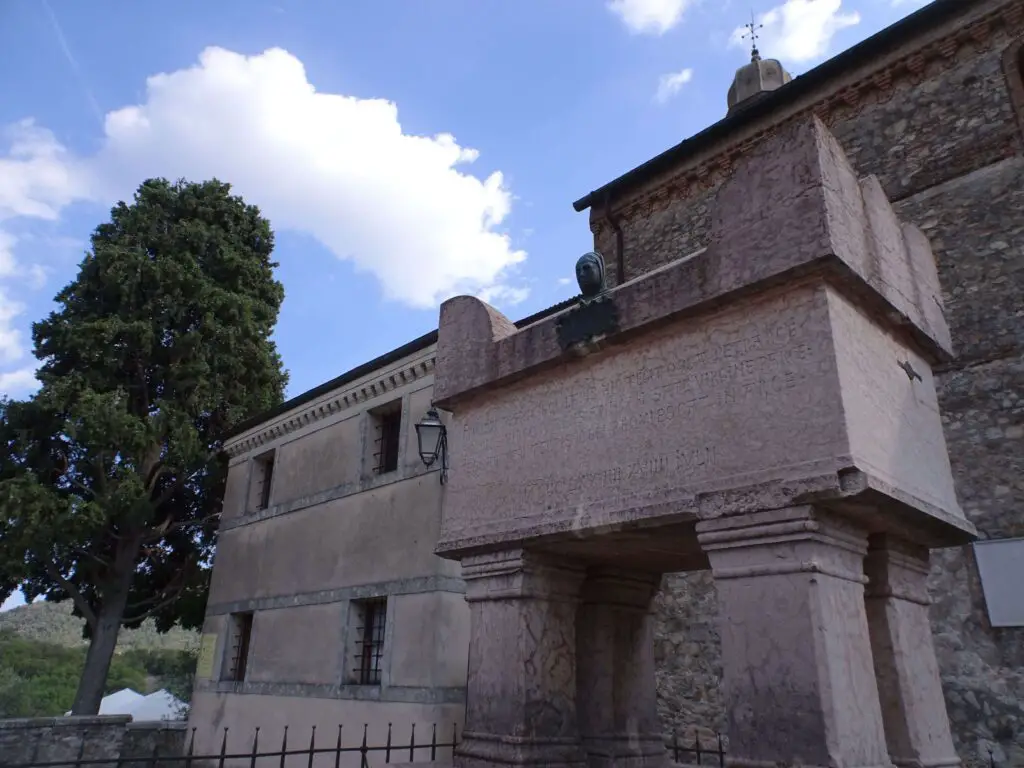
Francesco Petrarca, aka. Petrarch, best known to literature lovers for his longing love poems to the unattainable Laura spent his final years in the village and died here in 1374. You can visit his solemn tomb in the square next to the Chiesa di Santa Maria Assunta at the southern edge of town.
If you continue west, climbing the hill to the centre of the village and continue west along Via Valleselle, you’ll reach Casa del Petrarca, the poet’s old living quarters. The stone house is set in a pretty garden and most rooms on the inside are covered in frescoes. Most of these were added by a later occupant and depict scenes from Petrarch’s life and writings.
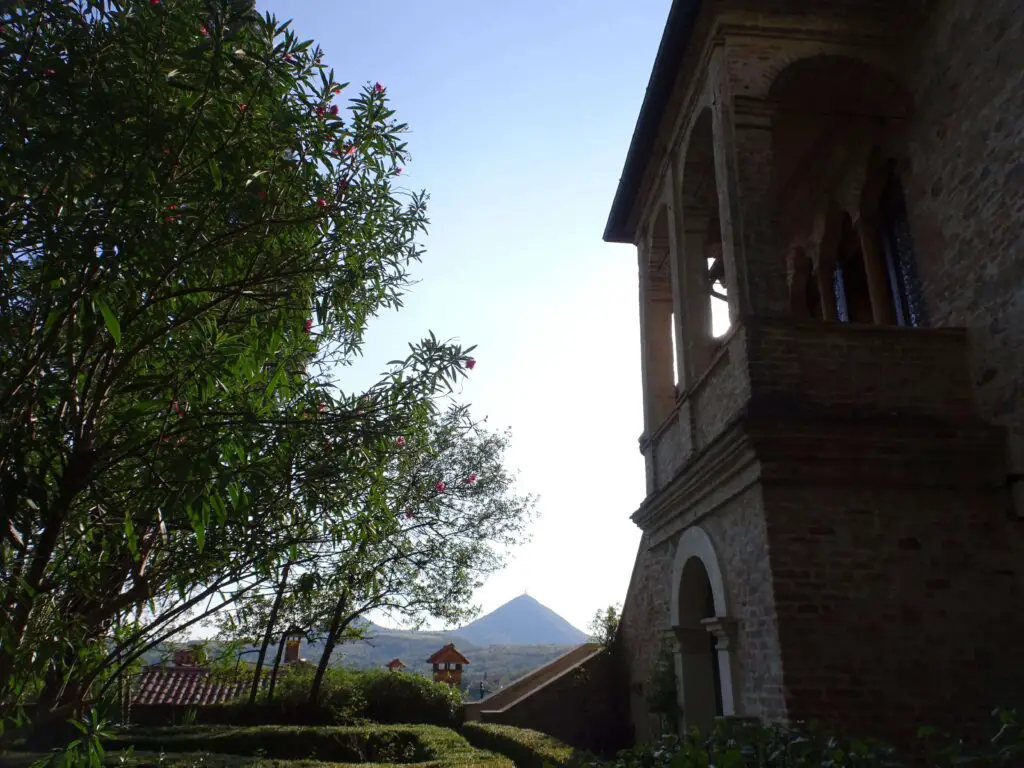
Have a look at the mummified cat, said to have belonged to the poet, which sits behind a glass panel in the room to your left right as you enter the house. The opening times vary by season, check them here. The entrance fee is 5€.
If you like to try regional specialties, have a look at the small shop across the road from the house, where you can try liquor and jam made from Giuggiolo (jujube berries) as well as other tasty treats from the area.
Hike around Monte Cinto
Continue west to the village of Cinto Euganeo, from where you can hike around the slopes of the nearby Monte Cinto. The hike of about 5km is pretty easy – you can find a description on this website.
If you’re here on a weekend, you’ll have a chance to check out the Museo Cava Bomba, dealing with the geological and economic history of the region. We had to skip it as we were there on a weekday, but we passed some somewhat forlorn looking dinosaur sculptures on our way up the mountain.

After a walking up a series of switchbacks, you’ll cross a pretty area used for wine growing before entering a forest full of chestnut trees. If you walk around the mountain in a counter-clockwise direction, you’ll soon pass an old quarry, where we encountered hundreds of tiny dashing lizards.
At this point, you could take a short detour to the top of the hill, where you’ll find some remaining foundation walls of a small fortification from medieval times. Unless you’re a serious history geek (or an archaeologist like me), you could probably skip it, as there’s hardly anything to see and there are basically no views from the top.
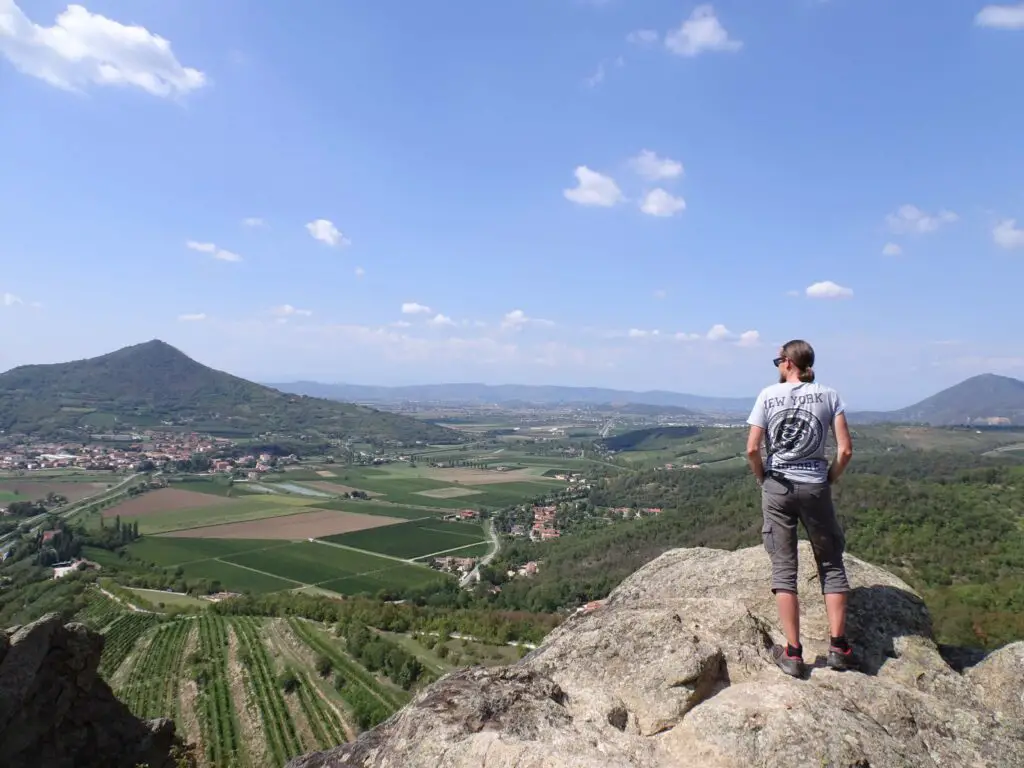
Instead, if you continue around the mountain, you should definitely take the detour to the Buso dei Briganti at the northern tip of the flank, which has views in spades. Rumored to be a former base for a band of robbers, the rocky outcrop offers wonderful vistas of the surrounding hills and plains to the north. Be careful while enjoying the view, though, as there’s a pretty steep cliff right behind it.
Afterwards you can return to the main trail and continue your hike around the Monte Cinto until you reach the vineyard that you passed in the beginning. From here on out, you can just backtrack the way you came to reach the trailhead.
Dinner at Teolo
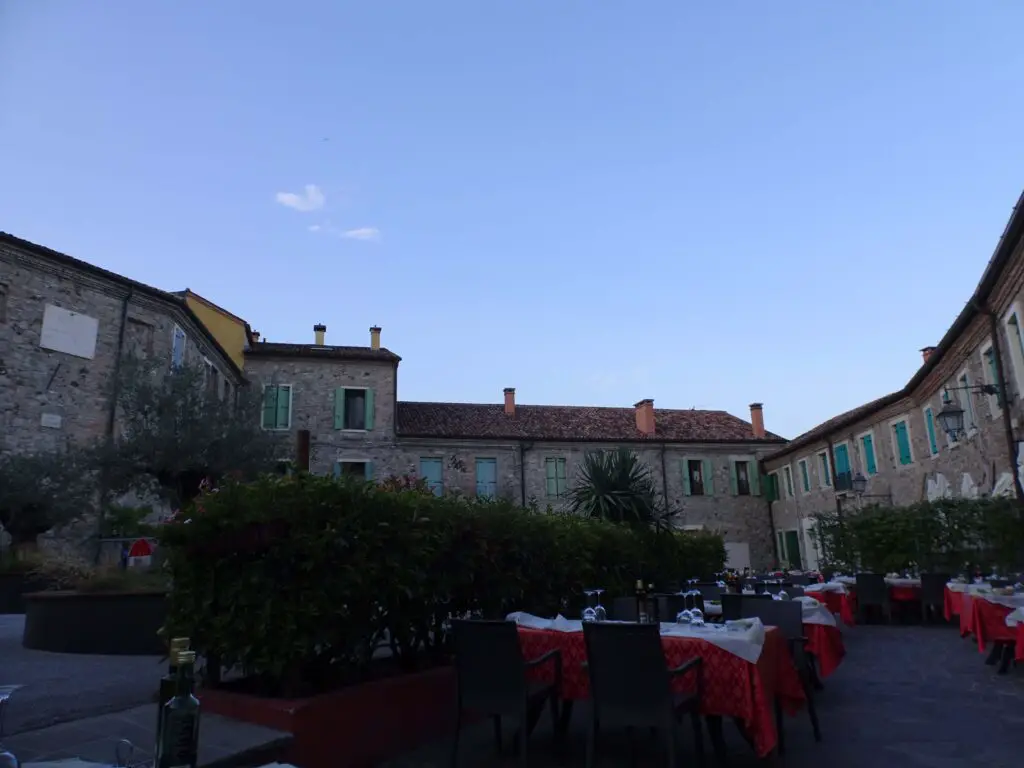
On your way back to Padua, I suggest you stop in the village of Teolo in the north-western part of the Euganean Hills. Have a stroll through the pretty medieval centre before finding a spot for dinner. We found Ristorante Pizzeria Quadrifoglio to be a great place, both because of its location on the picturesque town square and for its tasty food made with regionally-sourced ingredients (we loved the mushrooms). What better way to top of a great day of sightseeing in these magical hills?
Map of the Euganean Hills
Have a look at this map to get a general idea of the area and where the stops on the itinerary are located.
See also
The 14th-Century Fresco Cycles of Padua, Italy – Which of the UNESCO Sites Are Worth Visiting?
Exploring Padua Botanical Garden, the Oldest Botanical Garden in the World
